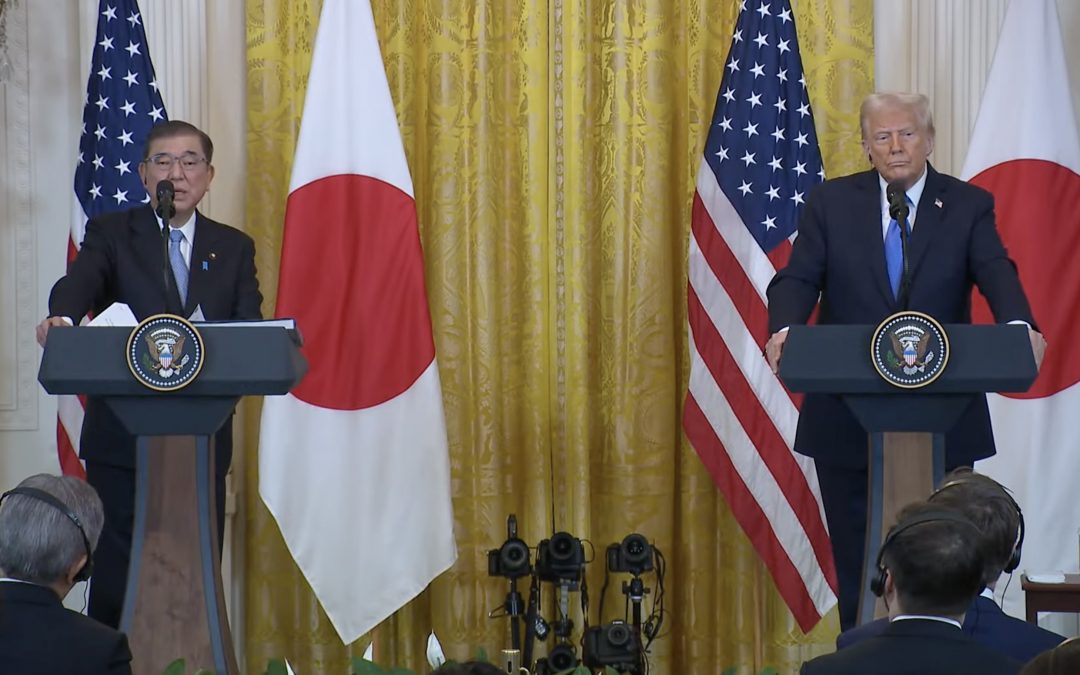WASHINGTON – China, Canada and the European Union responded to new tariffs implemented by the U.S. with reciprocal measures, while Japan and South Korea are charting a different course, offering deals in an attempt to preserve their relationships with Washington.
The White House says at least 130 countries are trying to strike deals over tariffs, and the United States’ most loyal allies in Asia, Japan and South Korea, are no exception.
“[Retaliation] is not something that they’re willing to risk for either the economic or the security consequences,” said Kristi Govella, senior advisor and Japan Chair at the Center for Strategic and International Studies (CSIS), on the center’s podcast episode on Wednesday.
Dealing with Trump requires allowing him to claim victory, said William Reinsch, senior advisor at CSIS. “What he really wants is the press conference where he’s saying, ‘I win. They surrendered. We’re great,’” he said.
Japan and South Korea are among the first countries willing to come to the negotiating table.
Tariff negotiations with Japan kicked off in Washington on Wednesday, with Trump joining his Treasury and Commerce secretaries in talks with the Japanese delegation. Trump later posted on social media that “big progress” was made. The Japanese prime minister said his delegation called the meeting “very candid and constructive,” though neither side shared specifics.
“To get a good deal for itself, Japan is going to try and make a case that they have done a lot for the economy of the US, and that they have a lot to contribute,” said Govella.
Since 1990, Japanese direct investment in the U.S. economy has grown steadily. Total investment reached $783.3 billion by the end of 2023, making Japan the largest foreign investor in the United States, according to a report from the Japan External Trade Organization.
In February, shortly after Trump took office and before the new tariffs were announced, Japanese Prime Minister Shigeru Ishiba pledged to boost Japan’s investment in the U.S. to $1 trillion during his first in-person meeting with Trump. Despite that commitment, Japan was still hit with a 24% tariff.
South Korea is also among the United States’ top 10 foreign investors. Just a week before Trump imposed a 25% tariff on it, the country’s Hyundai Motor Group announced a $21 billion investment in the U.S.
After the new tariffs were announced, South Korea’s top trade official Cheong In-kyo traveled to Washington to negotiate a reprieve with the United States Trade Representative. Cheong said the Trump administration expressed a willingness to negotiate with both Seoul and Tokyo.
Cheong signaled South Korea’s interest in joining the Alaska Liquefied Natural Gas Project, which would mean more imports and investments by the country in the U.S., as well as cooperation in shipbuilding that could help the U.S. compete with China.
CSIS Korea Chair Victor Cha said that although South Korea and Japan may leverage their existing assets in the U.S. and seek to boost investment to appease Trump in the short term, the unpredictability of the Trump administration could eventually push them to pursue other markets in the long run.
“There is a sense that they don’t really know what to expect from the U.S.,” said Cha.
Cha also pointed out that although the current business environment is tough, both governments have some “political space” to navigate the tariffs imposed by Trump.
Both countries are set to hold presidential elections this summer, but CSIS experts say opposition parties are not pushing for a combative response to Trump, leaving the current governments under little immediate political pressure.
Public opinion also appears to allow for a cautious approach.
A recent public poll in Japan shows that while 73.9% of respondents view the Trump administration’s tariff policy as unjustified, only 18.3% support retaliatory measures.
“The Japanese public is aware that it’s a difficult situation. They do want to see results – They do want to have their economic welfare protected,” said CSIS Japan Chair Kristi Govella.

